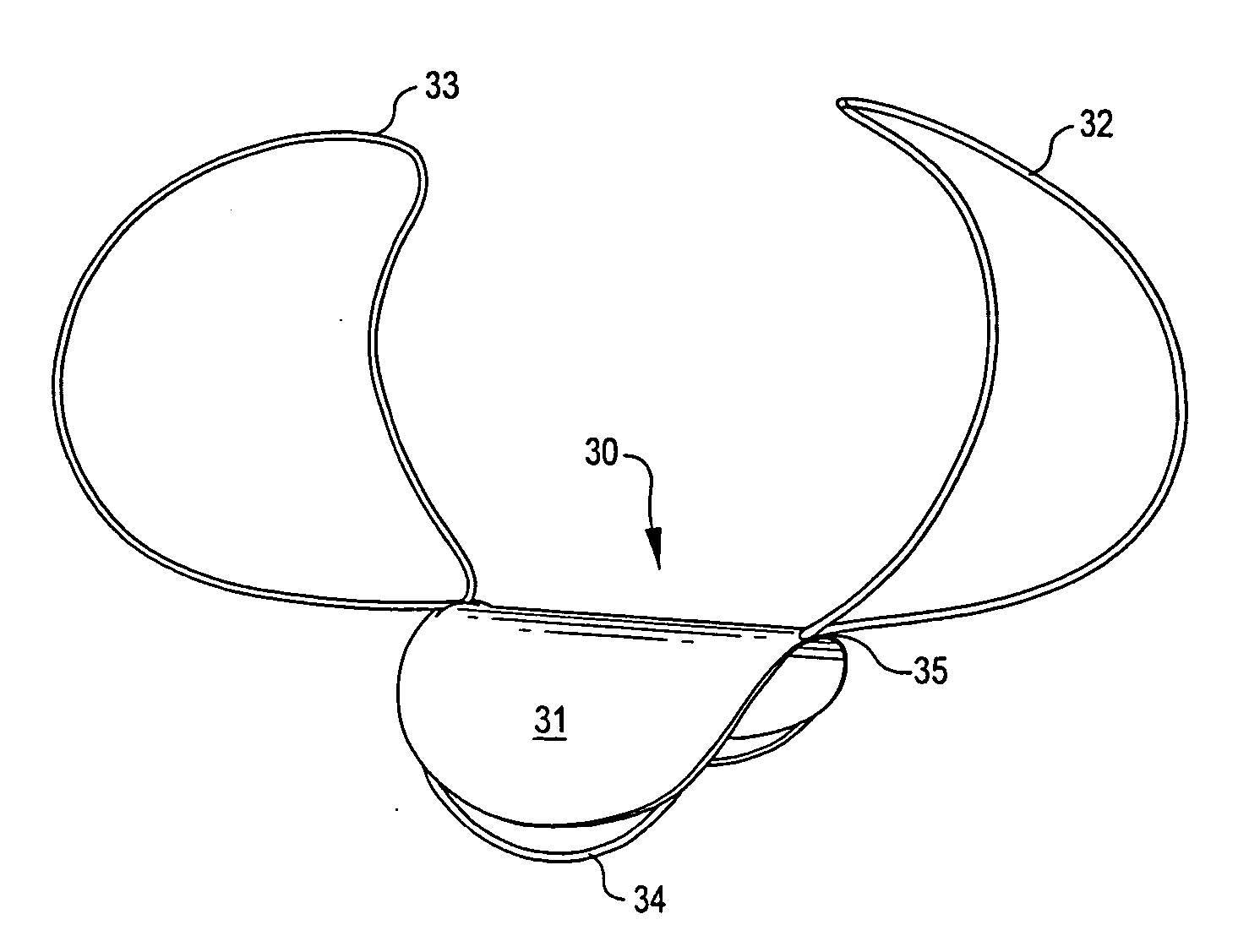Implantable aneurysm closure systems and methods
a technology of aneurysm and aneurysm, applied in the field of devices, can solve the problems of inconvenient and accurate placement of mixtures, difficult or impossible retrieval of materials, interference with blood flow or nearby physiological structures, etc., and achieve the effect of reliable attachmen
- Summary
- Abstract
- Description
- Claims
- Application Information
AI Technical Summary
Benefits of technology
Problems solved by technology
Method used
Image
Examples
Embodiment Construction
[0045] Implantable devices and methods of the present invention are described and illustrated, in detail, with respect to their application as aneurysm closure devices. It will be appreciated that these devices and methods are not limited to this application and may be adapted and utilized in connection with the treatment of other vessel or air passageway cavities, abnormalities, or the like.
[0046]FIG. 1A-1E illustrate an implantable device of the present invention. FIG. 1A shows a closure structure 10 comprising a flexible patch 11 mounted or retained on a framework structure 12 and optionally having an opening or slot 13 provided in a generally central portion of patch 11. In one embodiment, patch 11 comprises a biocompatible and biostable material that is substantially impermeable to solids and liquids, such as a medical grade silicone material, a fluoropolymer material such as a PTFE composition such as Gore-Tex or Teflon, a woven or non-woven fabric material such as Dacron, or...
PUM
 Login to View More
Login to View More Abstract
Description
Claims
Application Information
 Login to View More
Login to View More - R&D
- Intellectual Property
- Life Sciences
- Materials
- Tech Scout
- Unparalleled Data Quality
- Higher Quality Content
- 60% Fewer Hallucinations
Browse by: Latest US Patents, China's latest patents, Technical Efficacy Thesaurus, Application Domain, Technology Topic, Popular Technical Reports.
© 2025 PatSnap. All rights reserved.Legal|Privacy policy|Modern Slavery Act Transparency Statement|Sitemap|About US| Contact US: help@patsnap.com



